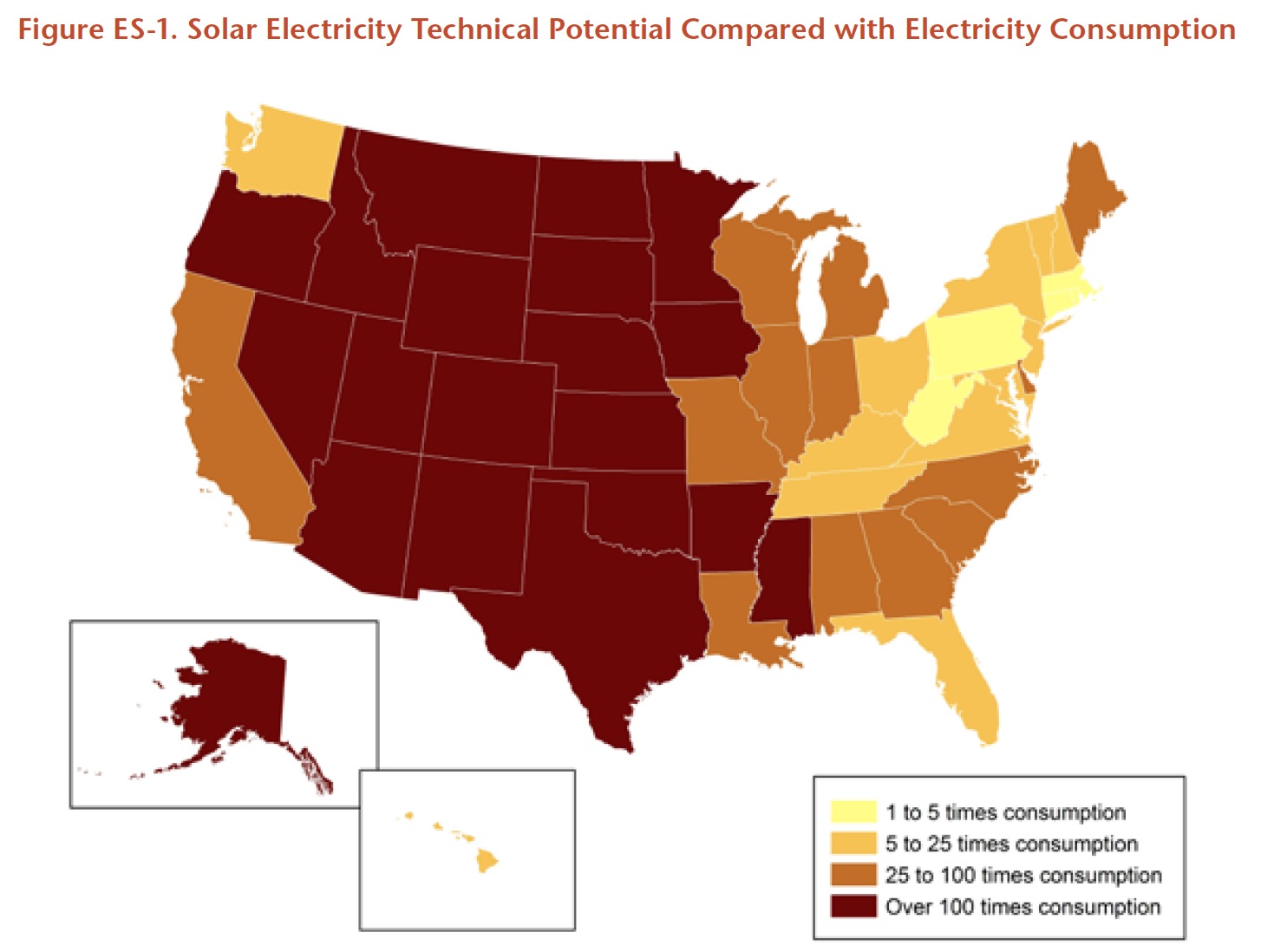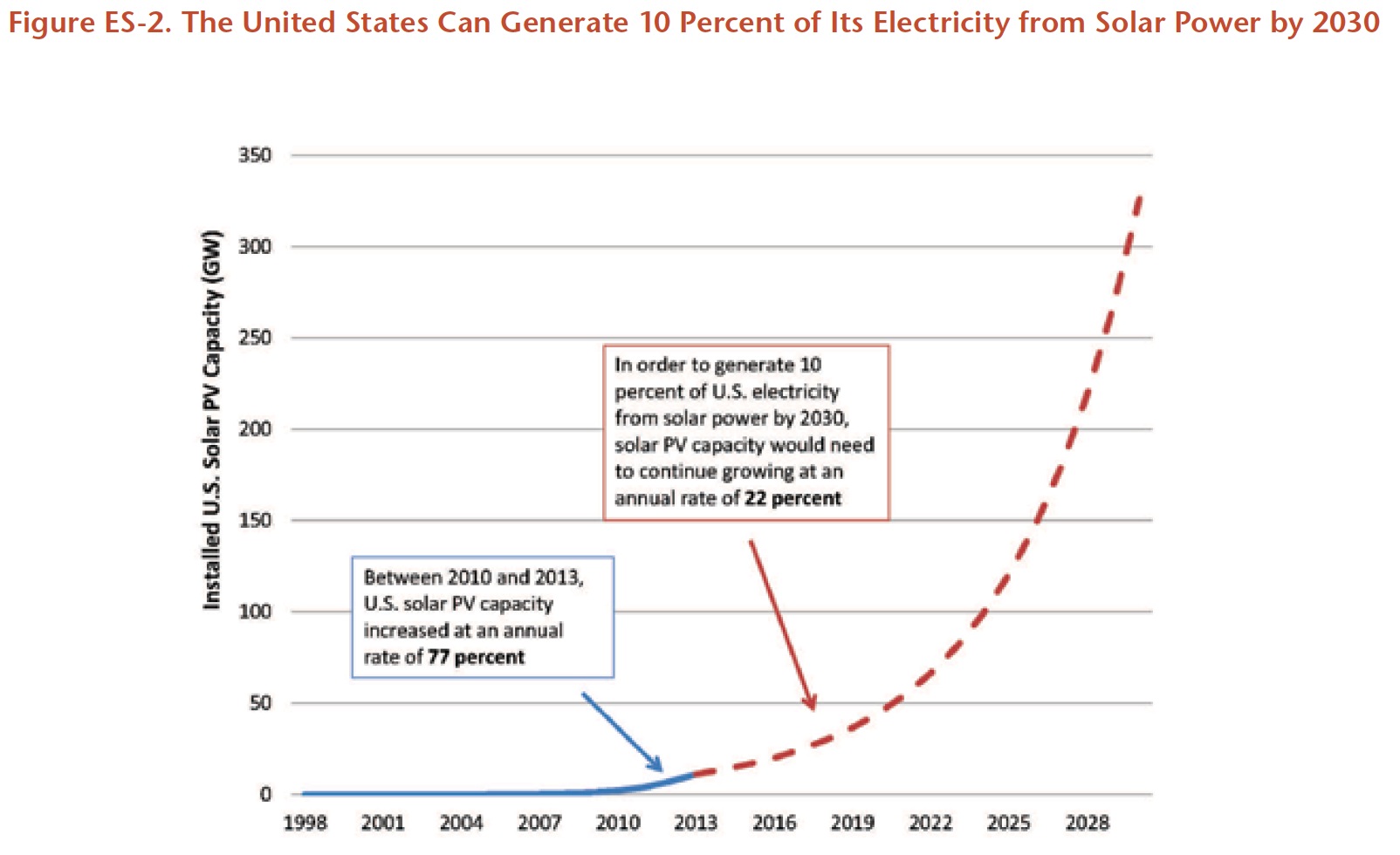ENVIRONMENT AMERICA
America could meet its energy needs by capturing just a sliver of the virtually limitless and pollution-free energy that strikes the nation every day in the form of sunlight. With solar installation costs falling, the efficiency of solar cells rising, and the threats of air pollution and global warming ever-looming, solar power is becoming a more attractive and widespread source of energy every day.
Solar energy is on the rise across the country. The amount of solar photovoltaic (PV) capacity* in the United States has tripled in the past two years. More than half of all new U.S. electricity generating capacity came from solar installations in the first half of 2014, and the United States now has enough solar electric capacity installed to power more than 3.2 million homes.
America should build on the recent growth in solar energy by setting a goal of obtaining at least 10 percent of its electricity from solar power by 2030. Achieving that goal would result in a cleaner environment, less dependence on fossil fuels, and a stronger economy.
America’s solar energy potential is nearly limitless. Based on renewable energy technical potential reported by the National Renewable Energy Laboratory:
- The United States has the potential to produce more than 100 times as much electricity from solar PV and concentrating solar power (CSP) installations as the nation consumes each year. Each of the 50 states has the potential to generate far more electricity from the sun than its residents consume. (See Figure ES-1.)
- There are 35 million residential and commercial rooftops that could host solar panels across the United States.
Continued growth in solar energy would bring a goal of 10 percent solar electricity within reach.
- Nationally, solar PV capacity increased at a rate of 77 percent per year from 2010 to 2013. If solar installations continue to increase at less than one-third of that annual rate of growth (22 percent) between 2013 and 2030, America would have enough solar energy to generate 10 percent of its electricity. (See Figure ES-2.)
Getting at least 10 percent of America’s electricity from the sun by 2030 would represent a major step toward stabilizing the climate, cleaning our air and building a prosperous, sustainable economy.
- Producing 10 percent of our electricity from clean, solar power would reduce America’s global warming pollution by 280 million metric tons in 2030, which is the equivalent of taking 59 million cars off the road. Solar energy at that scale would help the United States comply with the goals of the Clean Power Plan – the Environmental Protection Agency’s (EPA’s) proposed plan to reduce U.S. global warming pollution from the power sector by 30 percent below 2005 levels by 2030. If the EPA decides that distributed generation can help states achieve their goals under the Clean Power Plan, producing 10 percent of our electricity from clean, solar power would enable the United States to achieve half of its emission reductions goal.
- Expanding solar energy will also reduce emissions of pollutants that contribute to the formation of smog and soot and threaten public health, especially the health of vulnerable populations like children, the elderly and those with respiratory diseases.
- Obtaining 10 percent of U.S. electricity from solar energy would reduce water consumption from power plants dramatically. The life-cycle water consumption of solar photovoltaics is 1/500th of the life-cycle water consumption of coal power plants and 1/80th of that of natural gas plants, per unit of electricity produced.
- Solar energy creates local clean energy jobs that cannot be outsourced. Growth in the solar industry from November 2012 to November 2013 was 10 times faster than the national average for employment, and more than 140,000 Americans worked in the solar energy industry in 2013.
A future in which America gets at least 10 percent of its electricity from the sun is within reach. The tools to build this vision are available and the momentum exists – now federal, state and local governments should adopt aggressive goals for solar integration and implement policies that encourage the adoption of solar power.
Download full version (PDF): Star Power
About Environment America
www.environmentamerica.org
Environment America is a federation of state-based, citizen-funded environmental advocacy organizations. We believe there’s something special about our country — and so much worth protecting and preserving for future generations. From stunning waterways like Chesapeake Bay and the Great Lakes, to beloved national parks like Acadia and Mount Rainier, America’s natural wonders enrich our lives in countless ways.








 RSS Feed
RSS Feed